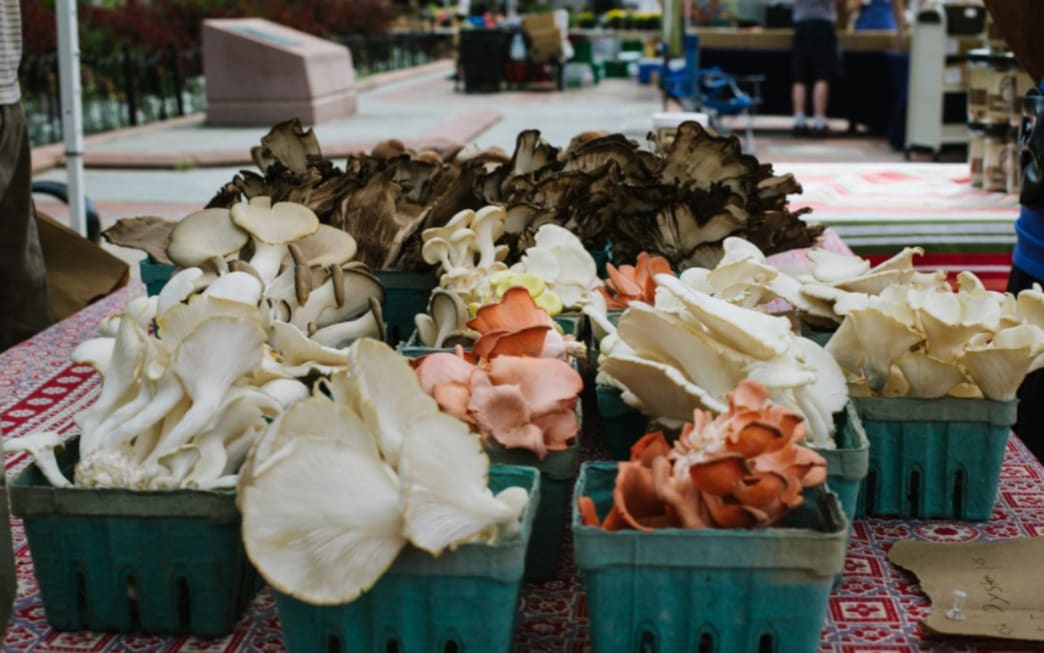Different mushroom strains can lead to significant bigger yields. Do you know which mushroom strains to use? We provide some insight in this article
Let’s start with the seven stages of mushroom cultivation, which has been adapted from Tradd Cotter’s book, Organic Mushroom Farming & Mycoremediation. It's a great book that I definitely recommend checking out. There's a couple of things that have changed in this version of mushroom cultivation, and basically the seven stages as I see it is:
- Strain selection
- Substrate treatment
- Inoculation
- Incubation
- Initiation
- Fruiting
- Harvesting
So that's your seven and there's plenty of ways to break it out and only do parts and you're not always involved in all of those stages of cultivation, but if you're doing it from a start to end, that's basically what you're looking at.
We'll start by looking at different mushroom strains to use. A mushroom strain is similar to what you get with humans. With humans we are all the same species, Homo sapiens. However, we all look different, have different strengths and weaknesses, and can do different things with our bodies. We have different colors of skin, eyes, hair, and body sizes, which are all influenced by our genetic makeup.
What genes are being expressed through the species homo sapiens is similar with mushrooms. For instance, if you take something like oyster mushrooms (Pleurotus ostreatus), you have a ton of different varieties in different expressions of the potential genetic make-up. That influences things like yield and temperatures they grow at, substrates they grow on, firmness of the mushrooms, size and even the coloration of the mushroom.
Many things are dependent on different mushroom strains. There are even businesses and universities that have focused on developing different mushroom strains and finding the highest-performing mushroom strains among them.
Typically the different mushroom strains that you find in the grocery store are going to be faster growing, higher-yielding mushroom strains then some mushrooms that you just find out in the wild. A lot of times, if you clone an oyster mushroom growing on a local sugar maple down the street, it'll probably fruit, but I won't fruit as abundantly as mushroom strains that have been bred by mushroom farmers.
Want to start growing mushrooms commercially? Learn how to do it with our commercial mushroom cultivation course online!
Some recommendations on different mushroom strains
A couple of common mushroom strains for oysters are 123 and 3015.
We did a strain trial with shiitakes that was looking at different mushroom strains on various substrates. We looked at five different mushroom strains on two different substrates. You can see our graphs associated with this study in this video on YouTube.
The shiitake mushroom strains we tested were 46 or 37, 82 or 75, and those numbers are just the names of the strains.
The first time we tried these shiitakes we tested them on logs, and we conducted this test over the course of two years. The average yield per log was over two pounds for WR 46 mushroom strain, which is double. The next closest strain was 372. Just by selecting the top mushroom strains, you have the opportunity to double your yield, or get even more than double. If you're growing 50 pounds of mushrooms, all of a sudden you could be growing 100 pounds just by using a different mushroom strain. Again, we looked at this with supplemented sawdust, so a different substrate, but the same mushroom strains.
Interestingly enough, LE 46, which was the best for logs, did the worst for a supplemented sawdust, and 3782, which was the second best for logs, did the best on the supplemented sawdust. It was almost 50% better than the next closest, which was 3790.
So again, the proper mushroom strain selection has a really big impact.
There are a couple of universities in America that study mushroom strains. Cornell is one example. Interestingly enough, in China, there are over 18 institutions dedicated to mushroom development and looking at new species and different methods of cultivation. So, there’s nowhere near that in terms of public institutions that are doing that here in the US. If you want good mushroom strains, China would be the place to get them.
Some different mushroom strains worth considering for growing pink, white, and golden oysters
Yellow Oyster AM1: This strain produces vibrant yellow oyster mushrooms which like to fruit at higher temperatures between 60-80 degrees F. The caps are typically small and numerous, and a large stem mass develops which can be eaten. Yields are medium to high.
White Oyster Elm A: This white oyster aggressively colonizes its substrate and has the ability to combat contaminants. It prefers to fruit in temperature in the 55-80 degrees F range. The caps are large, and the mushroom can fruit singularly or in clusters with large individual mushrooms.
Pink Oyster VDE-1: This strain yields pink to red fruiting bodies and prefers temperatures from 60-85 degrees F. This mushroom cannot survive temperatures below 40 degrees F. It has extremely fast colonization and ability to grow on a wide range of substrates. The clusters and cap size are smaller than the blue oysters mentioned above. Storage and shelf life of this mushroom is limited, and it produces a medium yield. This mushroom is a good option for farmers’ markets or CSAs, but not for the wholesale market.
Need spawn? We got you covered. Check out your options now.

